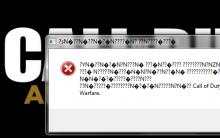Educational toys and games for children are popular, but like everything else, they can go in and out of fashion.
There are quite a few classic toys of this type; as a rare exception, one can cite, perhaps, the "magic screen", which has remained popular for several decades.
What is this toy, and who came up with such a "magic screen".
Content:
Appearance
Externally, the device is a small plastic box, usually of a bright color.
In the classic version, it is rectangular and flat, resembling the old ones in size and appearance.
Most of its front side is occupied by a screen covered with plastic or glass, on which the main actions take place.
On the front side of the case there are also two handles that can be turned in different directions.
Again, on the standard classic model, they are located in the lower two corners of the device under the screen.
This traditional version has undergone various changes - the shape of the device, the arrangement of the handles, the type of case, etc., have changed, but its principle of operation and functionality have always remained unchanged.
Operating principle
How to use the device and what can you do on it? This device enables the child to draw on the screen.
Control is carried out by two knobs, one of them moves the cursor vertically, the other horizontally.
As a result, dark lines appear on the silvery background of the screen, and you can draw broken lines consisting of vertical and horizontal segments.
Thus, with a sufficient degree of mastery of technology and habituation, it allows you to create even fairly complex drawings.
There are examples when artists created whole pictures on such devices. In order to clear the screen from the picture, you just need to shake or turn the device over.

Device
How does such a device work? The main operating mechanism is a sealed container, a box, the large side of which is the working screen.
Inside, this container is filled with very finely dispersed aluminum powder, but a metal cursor is also installed inside it, fixed and moving on static axes - vertical and horizontal.
It (the cursor) rests against the glass from the back with its sharp part. The line is drawn as follows:
3 As a result, a dark (cleaned) line appears on the screen against a light silver (aluminum) background.
After shaking the device, this metal powder is distributed evenly again, filling the cleaned areas. As a result, the drawing is erased.

Invention
The device was invented by the Frenchman André Cassagne in the 50s of the twentieth century, and gave him the French name "magic screen" - L'Ecran Magique.
But in France, the device was almost never produced, the rights to it were quickly transferred to the Ohio Art organization, which improved it and gave it the look in which we still know it.

Name "Magic screen" entrenched in Russia because it was with this name that the device began to appear in the 70s in the USSR.
It is worth noting that the technology was stolen, the permission of the copyright holders and the production license were not obtained.
Computer games have an anniversary that year. After all, 70 years ago, the first electronic game appeared, which subsequently gave birth to a whole game industry. Therefore, let's remember how it all began!
First step
How were the first electronic games, which became the forerunners of computer entertainment, were created? There is a widespread belief that such games appeared thanks to the appearance of the first console, created by Ralph Baer. Others remember the famous computer EDSAC, where in 1956 the OXO game known at that time was created for it, also known as Noughts And Crosses, which was an ordinary tic-tac-toe transferred to the screen of this device.
However, the first electronic entertainment appeared in 1947. We are talking about the game "Rocket simulator", which appeared on the basis of a cathode-ray tube. The appearance of this device was strongly associated with the recent world war. It should be noted that the emergence of new computing technology was closely associated with the rapid development of military technology. Many of the people who pioneered the emergence of the video game industry worked for the US or UK military industry.
To bookmarks
Diagram of the "Rocket Simulator" device
The creator of "Rocket Simulator" Thomas Goldsmith was no exception. The fact is that he developed his project for DuMont Laboratories, which produced various military products during the war years, and was also engaged in various army innovations, but the war ended, and the demand for the company's products began to fall. Therefore, most likely, it was decided to start creating new products.
It is not surprising that Thomas Goldsmith, who had a very decent track record, was brought in to create this device. He was an enthusiast in radio engineering, and also had a decent education, which he received at the prestigious Furman Institute, where the future creator of the game studied physics and other sciences. In addition, Goldsmith had a lot of experience. However, we immediately note that he created the simulator together with his colleague Estelle Ray Mann.
Thomas T. Goldsmith
According to various sources, work on the project began either in 1945 or in 1946, but already in 1947, scientists submitted their patent, where the work of this device was described in detail. The rocket simulator was only a prototype and it was never brought to full mind and, by the way, the device itself was created exclusively for a limited circle of people. The mass production of such a device was not planned. Still, it was rather bulky and inconvenient.
As mentioned above, the game was run on a cathode-ray tube, which was connected to an oscilloscope used as a screen. The gameplay was simple, the player was asked to control the missile and shoot down various targets. Game control was not the most convenient, because then there were no joysticks or a keyboard. For the game, special screen applications were made to control the rocket. As a result, the device resembled a military radar. And the gameplay itself evoked strong associations with the past war. Thus, we can say that the first game genre was a simulator made in the atmosphere of the Second World War.
This was the first electronic game, which became the forerunner of computer entertainment. Unfortunately, Rocket Simulator never became a game for the general public, although later ports of this game appeared for various computer systems.
Computer "Bertie the Brain"
Bertie the brain
A little later, in 1950, a rather interesting device appeared in Canada, which in English-speaking sources is called “Bertie the Brain”. The most interesting thing is that this device was created solely in order to implement the game "tic-tac-toe" on it. This was a very unusual decision, especially considering the size of this computer, the height of the device was up to 4 meters. And that's not to mention its weight. Bertie the Brain, unlike other similar computers, had a specially designed keyboard and display on which the game was played. And it was also here that the game difficulty setting appeared, which was set manually.
“Bertie the Brain” was created by Joseph Cates, who lived a very long and turbulent life. He was born in 1921 in Austria, when this country was occupied by Germany, he was forced to flee because of his Jewish origin to Canada. Despite the difficulties of emigration, Cates managed to get a very good education in Canada. He graduated from the University of Toronto with degrees in mathematics and physics. An important role in his life was played by the Vacuum Tube Company, which developed both radars and radio tubes. Thanks to his talents, Cates was later able to take part in the creation of the first Canadian UTEC computer.
Joseph Cates
Unfortunately, “Bertie the Brain” had a very short life. It was presented at a national exhibition in Canada, where it was a popular attraction with the local public, but soon after the exhibition ended, the computer was disassembled, and its existence was simply forgotten. However, its creator Joseph Keist, despite his venerable age (96 years!), Is still alive and recently gave a very interesting interview about the fate of his brainchild.
A year later, another interesting specimen appeared in the UK called Nimrod. This tube computer was specially designed for playing Him. It was created on the basis of the Ferranti Mark I computer and was created as a means to popularize computer technology and computing technology. Australian engineer John Bennett took part in its development, who happened to participate in the creation of the first computers: EDSAC, Ferranti Mark 1 and SILLIAC.
Nimrod computer
Booklets were also handed out at the exhibition, where they told in detail about Nimrod and its capabilities. Like all devices of this kind, the computer was very bulky. However, he caused a great stir among the public. Most of all, Nimrod became known after his exhibition in Germany, when the future chancellor Ludwig Erhard played in Nimes.
Despite the fact that the machine was created as a teaching device, visitors to the exhibition were not particularly interested in technical details or computer science, but they were attracted by the very opportunity to play a game with a computer. Moreover, the Nimrod did not have a display or its equivalent. Its role was played by flashing lamps, which imitated the sticks from the game Nim. The computer had another funny property, it could play against itself.
Ludwig Erhard plays with Nimrod
However, the real breakthrough came in 1952 with the release of a game called OXO, which was a computer version of the famous tic-tac-toe game. Most researchers believe that OXO can be called a full-fledged computer game. This statement is due to the fact that "OXO" came out on the EDSAC computer, which at that time was a rather advanced device. The computer had simple computing programs at its disposal. The ability to write programs in a symbolic language was also created for him.
By the way, the creation of EDSAC was overseen by the UK Department of Defense, which allocated the necessary funds for the development of this computer. In addition, Britain sought to create competitive products and therefore viewed the United States as the main rival in this direction, although it should be noted that EDSAC had much in common with a similar American project EDVAC, from which British scientists borrowed architecture.
EDSAC computer. It was on it that the first computer game came out.
In the early 1950s, British scientist Sandy Douglas became acquainted with EDSAC while studying at the University of Cambridge. Given the parameters of this computer, Douglas decided to write his scientific dissertation on the topic of human-machine interaction. As a result, the first computer game "OXO" appeared.
Despite the more advanced equipment, the game itself was of course primitive and the equipment was also bulky. In addition to the EDSAC computer itself, which occupied an area of 20 square meters, the game itself required a CRT (cathode ray tube) and a rotary dial. The last element was needed to control the game by inserting a dagger or a zero. Like the Rocket Simulator, the game did not receive any distribution, since it was on a single copy of EDSAC and was used as a local curiosity.
In the 1950s and 60s, a few more very significant games were released, but we will talk about them in the next article.
Write a messagePreface to the article on the history of the development of computer games
The history of computer games developed rather slowly. We will provide you with a chronology of major events that will show you the main steps and stages in the development of the computer gaming industry.
Computer games in the 50s of the XX century
Computer games date back to the 50s of the twentieth century. Today, the gaming community has not fully decided who is their original creator. History knows three people who began working on this issue in the 1950s. The first of these people is Ralph Baer. As an engineer in 1951, he introduced the idea of interactive television to the public. The second person is A.S. Douglas. In 1952 he wrote a game called "OXO". This game was a software implementation of the well-known "tic-tac-toe". And the third person who can be called the father of computer games is William Higinbotham. In 1958 he created the computer game Tennis. It could be played by two people.
Video games in the 60s of the XX century
In 1960, Digital Equipment Corporation released the first PDP series computer. It was named PDP-1. 2 years later, in 1962, the first computer game was developed for it, which the developer called Space War.
Computer games in the 70s of the XX century
In 1970, a patent was issued for a computer manipulator, without which more than one player cannot do now. It's about a computer mouse. The man who received the patent was Douglas Engelbart.
1975 was the year of public interest in computer games. William Crowther creates a game that is the prototype of the adventure genre and calls it Colossal Cave Adventure. This game is distributed instantly via the ArpaNET network.
Since 1977, various developers have been releasing more and more new computer games, which will subsequently significantly accelerate the development of personal computers.
Video games in the 80s of the XX century
In the 80s, due to the noticeable reduction in the cost of home computers (thanks to IBM), the computer games market began to grow rapidly. Now we can say that it was in the 1980s that the era of computer games began. Many companies have sprung up that are solely in game development. The Namco company releases the game Pac-Man, the essence of which was to control an incomprehensible creature, which was supposed to collect points scattered throughout the maze, dodging enemies. The idea of this game is still alive and often finds expression on mobile platforms.
In 1987, the VGA video adapter appeared, followed by SVGA. These events sent the 16th colored kingdom into the past. Now the monitors have 256 colors, which naturally made games more colorful and relatively similar to modern ones.
Computer games in the 90s of the XX century
Beginnings in the 90s, the boom of computer games only began to gain momentum, and the industry grew and grow. In 1993, on December 10th by Id Software, the great Doom was released. The game that laid the foundations for the shooter genre. For more information on this and other genres of pc games, see the article on genres of pc games. It is there that their typical representatives will be presented.
In 1994, the first multiplayer game appeared - Rise of the Triad. And the next year, The Terminator: Future Shock appears, the first shooter with elements of three-dimensionality of the world and enemies, as well as a free view using the mouse.
In 1996, the Voodoo I was born - the first video card with full 3D support. This allowed the release of Duke Nukem 3D and Quake, the first fully 3D games. Also this year there were games such as Super Mario, Command & Conquer: Red Alert, Tomb Raider, Resident Evil, Diablo and many others.
In 1998, Half-life and StarCraft appear. Games that have not lost popularity until now, after already 12 years! Many players still play the first StarCraft, although it has already become possible to download Starcraft 2 without SMS. However, this situation is typical for many hits of the past.
Computer games in the XXI century
In the first decade of the 21st century, the gaming industry is moving forward by leaps and bounds. Thousands of games are released annually, sold around the world in millions of copies, and the turnover is tens of billions of dollars. The most successful gaming projects raise hundreds of millions of dollars in sales. You can meet one of the box office record holders if you download Call of Duty Modern Warfare 2 in one file. The slowdown caused by the global financial crisis is gradually disappearing and the industry is gaining momentum again.
As you can see from this article, the development of computers is closely related to the development of games. It is for them that powerful video cards, processors are created, the amount of available RAM is growing. You can also read about the importance of computer games in the article on the role of video games in public life - Computer games. There is even an opinion, and not quite unfounded, that computers have become what we know them precisely thanks to games.
Poker is considered one of the most popular card games. Now there are many poker rooms where tens of thousands of people play every day. Many people wonder who invented poker, and when this game even appeared.
There is no definite answer, since the history of poker began a long time ago. There are only a few origin theories that are not fully proven.
The origin of the game in Europe
The first mention of poker in Europe appeared in the middle of the 16th century. It is believed that this is where poker was invented. The game was more popular among Italians and Spaniards. Entertainment was not called poker, but "Primero"... The rules here also differed from the modern ones:
- The players were dealt not 2, but 3 cards at once.
- There were no names for poker combinations, but it was possible to collect the same cards in height or suit.
- There was only one round of bets after which the cards were revealed.
A little later in the 18th century, an analogue of poker appeared among the British. Here the players were given 5 cards per hand, from which they collected a combination. The principle here is very similar to classic poker. Already in these times, bluffs were actively used to win money. The British still believe that it was in their country that poker was invented.
History from Asia

Many people are interested in the question, when did poker appear? Some sources mention that poker originated in Asia as early as the 10th century... This game was preferred by the emperor and his subjects. The cards were cut out of ivory and cost a lot of money.
In the story of the commander Shang Tsung, there are references to this gambling game. He preferred poker and was considered a pretty strong player. Many historians believe that it was this man who invented poker.
Differences and features of the rules in the 10th century:
- Only 5 people could play at the same time.
- The deck consisted of only 25 ivory cards.
- There were 5 suits in total.
Most historians adhere to the idea that poker originated in China.
Game in America

There is a version that the game and the basic rules of poker were invented and brought to America by the French. The first games started in Louisiana. It was here that poker arose, which in terms of meaning and rules is the closest to the modern game. In 1834, a deck of 52 cards was used for poker in America.
The sailors were very fond of this game and preferred to play poker on the ship. Therefore, the rules have spread to other states as well. In the Wild West, the game became an important part of the culture, almost everyone knew about the rules.
There is speculation that poker came up with Jonathan Greene... He mentioned the game many times in his letters, described the nuances and rules. However, it can be understood from his text that he simply watched the play of his sailor friends and made written notes. No other evidence of his authorship could be found. Greene called playing cards sailor's entertainment, since during the voyage it was the main leisure of sailors.
How did poker gain popularity?
Many people wonder when modern poker appeared and from what period it began to gain its popularity. The game began to gain popularity in America and gradually spread throughout Europe. In the 19th century, almost all European countries already knew the rules of the game, which are still valid today.... However, at that time poker did not have such massive popularity, the game was not taken seriously. And only after the First World War a large "wave" of popularization of poker began, everyone began to study the rules in detail and treat the game as a sport.

The most popular type of poker is Texas Hold'em. It appeared in Texas. He later gained popularity in Las Vegas. In the beginning, poker was played only with a narrow circle of friends. And a little later, this game began to appear in the entertainment venues of Las Vegas. At the moment, it is here that most of the poker clubs are open.
In 1970, the most famous and largest tournament in the world series of poker, the WSOP, appeared. Players from all over the world come to it to receive the main prize and compete with the best rivals. After that, other, equally large and popular poker tournaments began to appear.
Who exactly invented poker?
Many players believe that the game itself was invented by Doyle Brunson. This player is considered a true poker legend. Brunson really devoted his whole life to the game and was able to achieve incredible results. The player himself does not assume the authorship of the poker game and its rules.
The meaning of the word "poker"

It is not known until the end where the rules first appeared, and who invented the game of poker. The same goes for the term "poker". Historians cannot give an exact answer about the origin of this word.... However, there are such versions:
- Many believe that the German word pochspiel became the first name of the game. However, this fact has not received precise evidence.
- There is a version that poker originated from the word poque... The French called this card game with similar rules.
- In English poсket Is a pocket or purse. Therefore, there is a version that robbers and cheats gave the card game such a name. Only at the same time did they replace the word poсket on poker.
- The word "poker" from English has an exact translation - poker. However, this subject has nothing to do with the game and the rules, which misleads many historians.
Conclusion
Historians around the world find it difficult to answer exactly the question of who invented poker. The game appeared so long ago that many facts about it have been lost. For all the time, the rules and nuances have been changed and supplemented many times. The game began to grow in popularity in the 70s of the last century. Now poker has gained so much fame that it is equated with a sport, and not a gambling entertainment. People do this as their main job. Whole poker schools are being opened, where you can learn the tactics and psychology of the game of poker. In our Academy of Poker, players are trained on the Academy Win Strategy course under the guidance of a coach who helps to easily determine the strength of opponents and choose a table where a beginner player can effectively play according to the strategy we provide. You will understand the additional software: understand how to work with Holdem Manager 2, set up your own HUD and use this to learn how to read opponents. Also, you will have 3 hours of individual lessons with a personal trainer, after which the results will not be long in coming. Sign up using the link below.
Everyone knows that when the first computer appeared, its creators could not have imagined that very soon it would become an obligatory thing in every home. Then, in the late 30s - early 40s, a computer was the most complex computing machine, and to work with it, at least a serious university education was required. Now any elementary school student can work on a computer. True, his "work" is very different from what was done more than half a century ago. Moreover, the creators of computing machines in a nightmare could not dream that it would be possible to play on a computer. After all, they were created in special scientific institutes to process the most important data.
But a person is able to adapt almost everything to his needs, and already in 1952 the English scientist presented an interesting program at the defense of his dissertation. It was called OXO and was nothing more than ordinary tic-tac-toe. True, Mr. Douglas did not set himself the goal of entertaining the audience and making everyone play on computers. His program was simply a better demonstration of the capabilities of the computing machine, but that was the first step.
The next step was taken by an equally remarkable person who was a nuclear physicist by profession and worked in one of the strongest American laboratories. His name was William Higitboten. It is he who is considered to be the creator of the game that the older generation remembers. An avid tennis player, he recreated the court on a computer screen. In the opinion of modern gamers, the game is nothing interesting, just the ball flies from one half of the field to the other, and the players beat it off with a vertical strip moved by two buttons. The funny thing was that he was using an oscilloscope screen that hadn't been used for a while. The game became incredibly popular, and all employees lined up to play a couple of sets. But the harsh reality demanded that the oscilloscope be used for work and the scientist had to disassemble the toy. However, the principle that the American used was the basis for many other games.











Black screen when starting Far cry 4 starts what to do
Batman: Arkham Knight crashes?
Metal Gear Solid V: Phantom Pain: Easter Eggs and Non-Obvious Possibilities
War Thunder crashes? Game not starting?
How to run a game in windowed or full screen mode on Windows